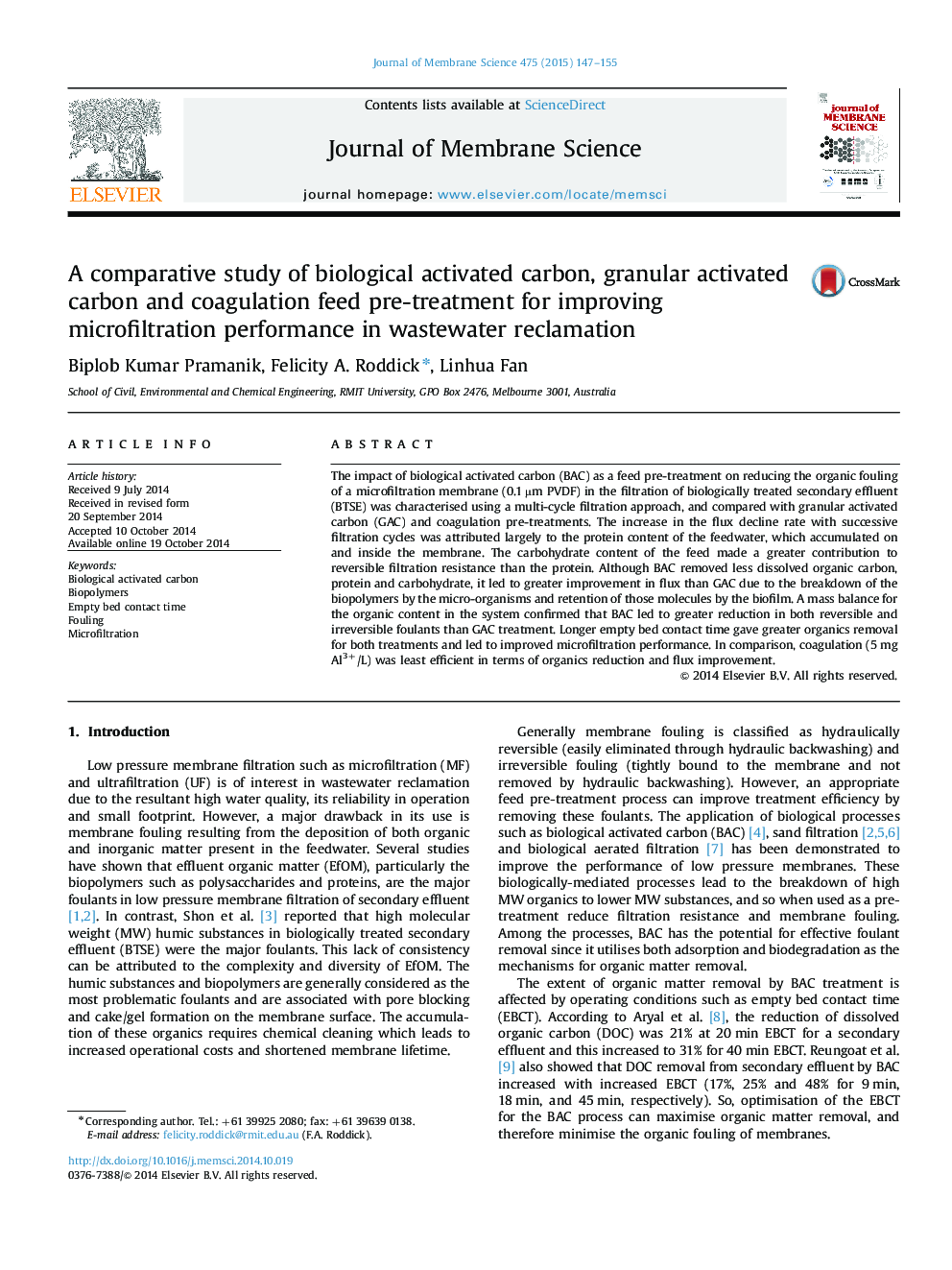| Article ID | Journal | Published Year | Pages | File Type |
|---|---|---|---|---|
| 633150 | Journal of Membrane Science | 2015 | 9 Pages |
Abstract
The impact of biological activated carbon (BAC) as a feed pre-treatment on reducing the organic fouling of a microfiltration membrane (0.1 µm PVDF) in the filtration of biologically treated secondary effluent (BTSE) was characterised using a multi-cycle filtration approach, and compared with granular activated carbon (GAC) and coagulation pre-treatments. The increase in the flux decline rate with successive filtration cycles was attributed largely to the protein content of the feedwater, which accumulated on and inside the membrane. The carbohydrate content of the feed made a greater contribution to reversible filtration resistance than the protein. Although BAC removed less dissolved organic carbon, protein and carbohydrate, it led to greater improvement in flux than GAC due to the breakdown of the biopolymers by the micro-organisms and retention of those molecules by the biofilm. A mass balance for the organic content in the system confirmed that BAC led to greater reduction in both reversible and irreversible foulants than GAC treatment. Longer empty bed contact time gave greater organics removal for both treatments and led to improved microfiltration performance. In comparison, coagulation (5 mg Al3+/L) was least efficient in terms of organics reduction and flux improvement.
Related Topics
Physical Sciences and Engineering
Chemical Engineering
Filtration and Separation
Authors
Biplob Kumar Pramanik, Felicity A. Roddick, Linhua Fan,
